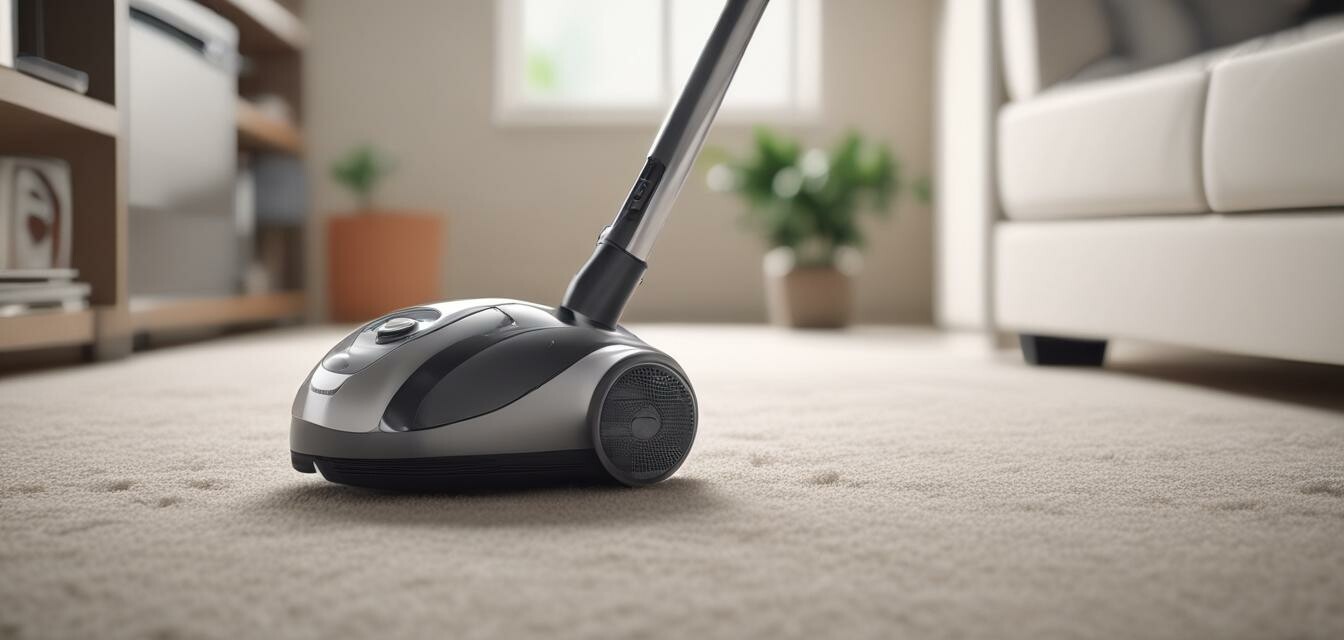
This article was generated using AI and is based on real customer reviews from the Amazon platform. It contains affiliate links, meaning we may earn a commission—at no extra cost to you. As Amazon Associates, we earn from qualifying purchases.
The Future of Allergy Management in Vacuuming
Key Takeaways
- Modern vacuum technology offers innovative features to tackle allergens.
- HEPA filtration systems are becoming standard in many vacuum models.
- Robotic vacuums are reshaping the way homes are cleaned.
- Sustainable practices in manufacturing are emerging in the vacuum industry.
- The demand for allergy-friendly products is driving market growth.
As households across the globe are increasingly affected by allergens, understanding the evolving trends in vacuum technology is crucial. Today, we’ll explore how advancements in vacuuming are shaping the future of allergy management.
Emerging Technologies in Allergy Management
Vacuum cleaners are now equipped with a variety of innovative technologies aimed at filtering out allergens. Here are some significant advancements:
- HEPA Filtration: High-Efficiency Particulate Air filters capture 99.97% of particles, including dust, pollen, and pet dander.
- Smart Sensors: Newer models are incorporating smart technology that adapts to floor types and detects allergens.
- UV-C Light Technology: Used for sanitizing surfaces, this technology helps to neutralize allergens present in the home.
Robotic Vacuums: A Game Changer for Allergy Sufferers
Robotic vacuums have revolutionized the cleaning process. With their ability to clean regularly without user intervention, they offer a consistent solution to allergen buildup. Key features include:
- Scheduled Cleaning: Users can program these devices to clean while they are away, ensuring a dust-free environment upon returning.
- Self-Charging: Many robotic vacuums automatically return to their docking stations when the battery is low, providing effortless maintenance.
- Smart Home Compatibility: Integration with smart home systems allows for voice commands and remote operations.
Consumer Preferences and Trends
The growing awareness of how allergies affect daily life is steering consumer choices. A recent study found that:
| Consumer Preference | Percentage of Respondents |
|---|---|
| Demand for HEPA Filters | 75% |
| Interest in Robotic Vacuums | 60% |
| Sustainable Manufacturing Practices | 55% |
Brands are starting to respond to this demand by integrating more features into their models, especially in the allergy-friendly category. To learn more about various vacuum types, visit our Bagged Vacuums or explore Bagless Vacuums.
Sustainable Practices in Vacuum Manufacturing
Consumers today are conscious of their environmental impact. This has led to a surge in the popularity of sustainable practices within product manufacturing. Key trends include:
- Recyclable Materials: Manufacturers are utilizing recyclable components in vacuum assembly.
- Energy Efficiency: New models are being designed to consume less power while maintaining high performance.
- Responsible Sourcing: More brands are committing to ethical sourcing of materials, reducing the overall carbon footprint.
Conclusion
The fusion of advanced technology with a growing awareness of health has placed vacuum cleaners at the forefront of allergy management. By investing in better cleaning tools, households can greatly reduce allergens, contributing to healthier living environments. For more on vacuum maintenance and tips, check out our Maintenance Tips section.
Pros
- Improved filtration systems capture more allergens.
- Smart features enhance usability and control.
- Robotic vacuums offer convenience and consistency.
- Sustainable practices help reduce environmental impact.
Cons
- Advanced models can be more expensive.
- Some smart vacuums may require regular software updates.
- Automation can lead to over-reliance on machines.
Stay Informed with Trends and News
Keeping up with the latest changes in vacuum technology is essential for allergy sufferers. For ongoing updates and trends, visit our News and Trends section to stay informed about new products and innovations in the industry.